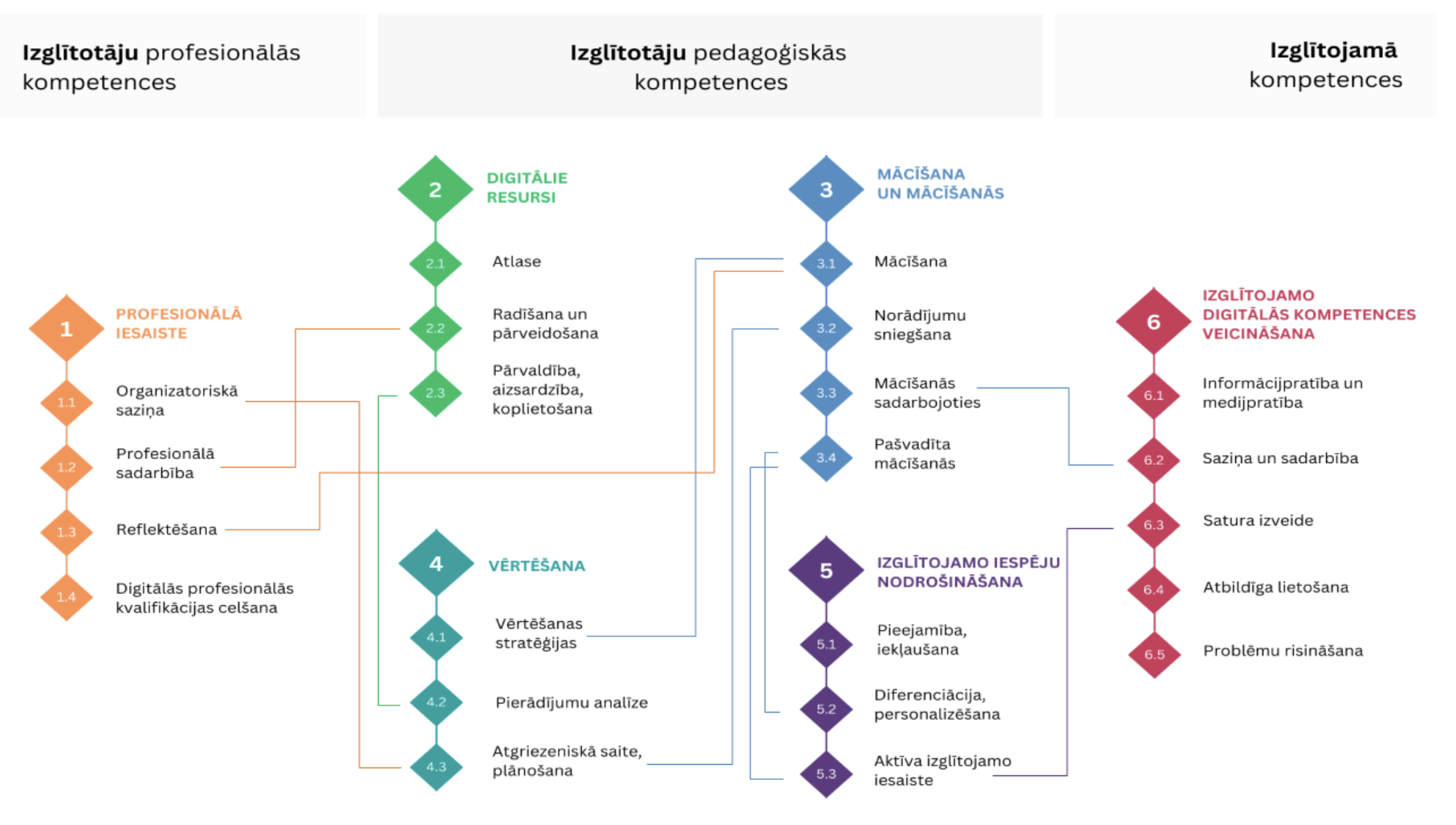The European Digital Competence Framework for Educators (DigCompEdu) in Latvian, prepared by the Latvian Information and Communication Technology Association (LIKTA), is available. The framework is designed to support national, regional and local policy-making efforts to promote the digitised competence of the Totaña, by means of a Cluster Reference Model with a common language and understanding.
The ubiquitous nature of the Digitalo technologists has made a difference to all aspects of the myselves: the fact that we are a communicé, that we spend time, that we spend time and that we know what we know about information and information. There has been a change in the fact that we and ourselves have changed. The world grows with the new world, with digital technologists everywhere. The VIN does not know, and cannot know, that it is a world without it. It is unaware that they naturally have the right skills to make effective use of digital technologies.
The DigCompEduframework is wholesome and growing from pre-schools, including the general public and the unformed context of slipping and unformed drainage. It provides a framework for the digital competence model, i.e. the Member States, the regional board of directors, the State and the public authorities, and the public or pride profession.
The DigCompEdu Framework covers and characterises pedagogical specific digital competences, with 22 key competences, which refer to the sixteen fields of cardoon:
- area 2: involvement of the professor. Uses digital technologists for communication, collaboration and professional development.
- area 2: digital resources. Benefit, create, Collectigo and share digital resources.
- area 2: MAs & Ma.ci.sa. Manages and manages the digital technology using the process of ma-inci-style and ma-fiscal process.
- area 2: veining. Uses digital technologies and the strategy to improve.
- area 2: provision of facilities for the glanders. Use digital technologies to promote integration, personalisation and activism.
- area 2: the competences of the digitised digital are promoted. Draws attention to digital technologies’ information, communication, content, well-being and problem.

TheDigCompEdu framework is based on areas 2 to 5. Cluster 1 explains the digital pedagogical competences of educators, i.e. digital competence educators have the effectiveness of post-secondary, pre-innovative and pre-innovative strategies. Domains 1, 2 and 3 are based on whether or not they are supported by technologies at every stage of the process. The delineation of competence in the field of inventory shows that the effectiveness and innovatory use of digital technologies in general (field 2), i.e. (domain 3) and the veining (field 4) of the technologies, is reflected in the use of technologies. Domain 5 identifies the digital technology POTEnCIA) in order to enshrine the strata of the glanded orientetas and the masci-sana-style. The scope of the sector passes through areas 2, 3 and 4, as it is an example of fundamental principles relevant to and complementary to the area of competence.
The framework provides a step-by-step model in order to dilute Totaños and give them their digitised competences. It is a part of the celebration of the ses-in-the-speaking stages, in which the competences of the Tota digita digitaème are generally recognised, in order to ensure that it is recognised as such and to decide on the specific works to be carried out in order to increase competence in the course of the phase of the process.
- The first two stages, i.e. the colostrum ( A1) and the stages (A2) of colostrum, new information and basic digital practices.
- In the two phases to be observed, i.e. INTEGRE- ata -phase (B1) and expert ( B2), Totaños, excursions and structures.
- The high-level Kajaumeni -sláderis (C1) and the pioneer (C2) transfer their knowledge, review and analise of existing practices and new practices.

Each competence is subject to progress depending on the level of competence and the fact that it generally benefits from a high level of quality. Tome-r DAZИi atslegua RDI is a single area of competence for one and the same qualifier.
The framework is a response to a multitude of understandings among the Member States of the European Union that ‘Tota’, so that it promotes the use of the digital technology POTEnCIA) for innovation and innovation, does not need to be addressed by a set of digitised competences specific to the profession. At the same time, it provides an opportunity for debate, the language and understanding of which is the starting point for the launch of the DAZ-audio tool, and for discussion and discussion in order to ensure that the competences of the State, the digitaña of the Totaña or the State, the reg.nionala or the Vieteuja-Leumeniu may be recognised.
The DigCompEduframework provides:
- a stable background that can guide all policies in all areas;
- a template that gives an interest to the interested party to draw up a specific instrument that corresponds to their needs, without drawing up a conceptual basis for their work;
- collegiate language and understandings that can lead to dialogue and exchange of best practices between countries;
- a division of reference points for the Member States and other interested parties to confirm the fullness and approach of the existing and future instruments and systems.
The framework is based on the work carried out by the European Commission’s Joint Research Centre (JRC) on the mission of the Director-General (DG EAC) of the Joint Research Centre (JRC) of the European Commission.
The document’s localisation in Latvian will be provided as part of the European Platform for Digital Skills and Jobs in Latvia (No 2020-LV-IA-0217) project of the European Commission.
#EiropasKomisija #DigCompEdu

